SWEET SEPTEMBER
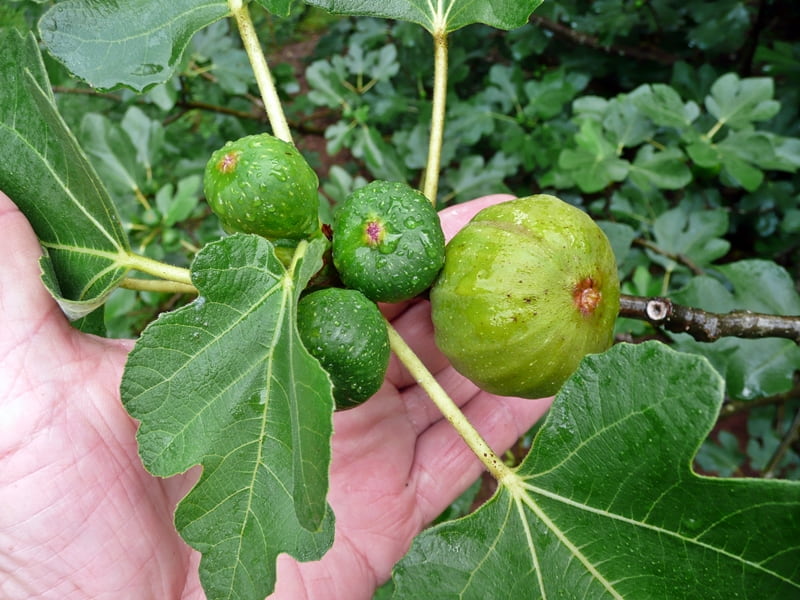
I love this time of year. It’s usually a bit dry and dusty (as I write this we are parched dry locally with no predicted rain for days to come) but even in that there’s joy. Some of it is anticipation of the delicious perfume of the first raindrops of an early autumn shower on thirsty ground. There’s no smell quite like it. Then there’s the bounty of fall, found in myriad forms by anyone fortunate enough to live close to the good earth. Brown turkey figs outside my kitchen window are all but gone, but their honey-like sweetness gave me taste delights for weeks. I had a good crop of muscadines, and thankfully this year squirrels and deer didn’t do much damage on that front. Their smell fills the air as I wander around, no doubt because I have almost 40 varieties with vines scattered across portions of three acres in no particular pattern other than one reflecting over-exuberance on my part.
Meanwhile, it’s a good time to be out and about in the deer woods. Woodlands cry out for a September saunter to check out stands, do a bit of scouting, or merely savor thoughts of those coming rites of fall. Nature’s bounty approaches the fullness of the season as well. Soon the first white oak acorns will be dropping; already persimmons are showing hints of the yellow which will in due course turn from alum tartness to spicy orange sweetness, and pawpaws are already mellow and ripe.
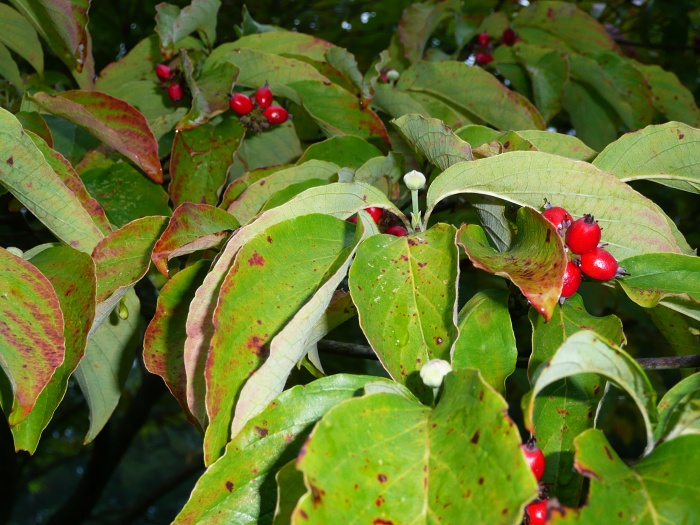
Then there are the wildflowers of autumn. Purple clusters of late blooming phlox along field edges, a dazzling array of wild asters diverse enough to give a naturalist like William Bartram moments of pure delight, the regal stalks of Joe Pye weed, now in its last summer hurrah, the eye-catching purple of ironweed, and best of all, the striking loveliness of stalks of cardinal flower with all the vivid red the plant’s name suggests. Add to that the colorful display of dogwood berries turning a cheery red, brilliant vermilion leaves of sumac, purple clusters of elderberries with their promise of cobblers and jelly, ripe huckleberries hanging heavy on bushes high up in the mountains of my raising, and the first hints of yellow and gold on hickories and poplars. It all adds up to a cornucopia of nature’s eye candy along with serving as a harbinger of October glories to come.
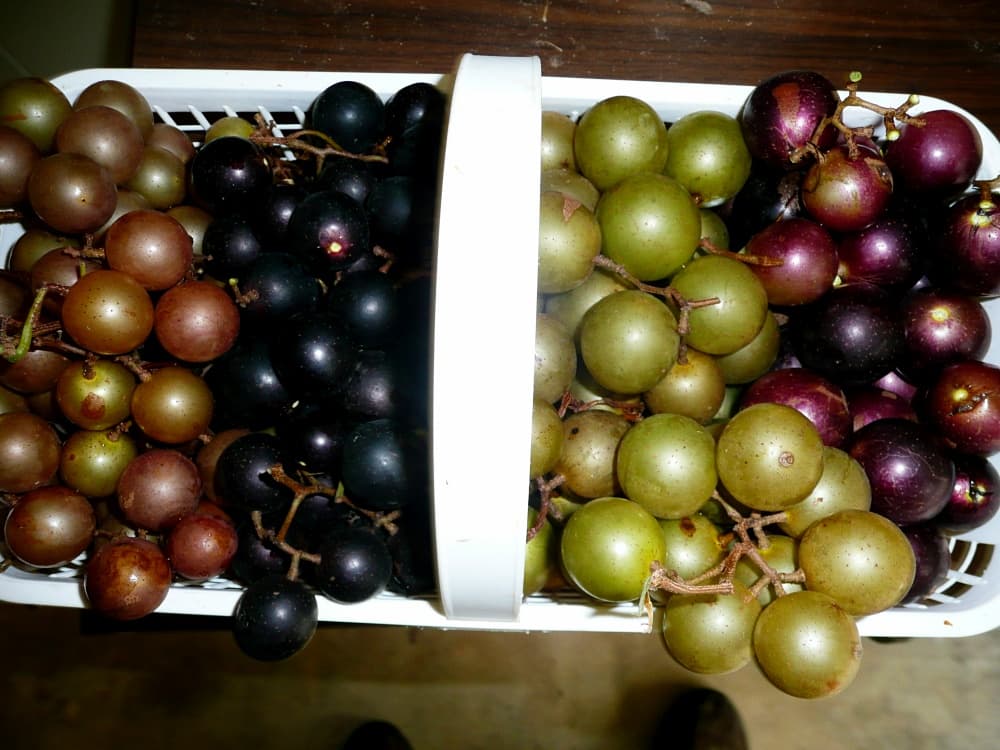
Yes, September is sweet, and the month is made even more so thanks to being so full of promise of what lies just ahead for the hunter and what it means in terms of another season of the earth’s growth winding its way to an end. That’s enough for this month’s chronicle other than to note that I’ve written myself into a point where I’ve got to grab a bucket and head outside to gather muscadines, claret globes filled with goodness, along with some scuppernongs so sweet each grape is a special sort of ambrosia. Savoring their taste is about a fine a break from being in front of a computer as I can think of (at least until deer season opens just a few weeks down the road).
JIM’S DOIN’S
I’ve been uncharacteristically active, both in recent weeks and in terms of plans for weeks to come, for someone who is pretty comfortable just writing, reading, cooking, and spending plenty of time at home. Maybe the most exciting “going on” was getting together with a steadily dwindling but still purely delightful group of my high school classmates for another celebration of our graduation so many years ago. Our class was never large (there are 84 of us pictured in the senior annual) and our numbers have been reduced by at least 40 and likely more. Still, the 15 class members, family, and friends who did get together had a grand time reliving the past. I find, and I’d be curious to hear from older readers in particular if it’s true for them, that the older I get the greater my fondness for youth’s lost days becomes.
Thanks to one of those spurts of extra energy that seem to hit me every time I go back to the place of my birth, I’ve got several writing projects in mind. One would be joining my brother, Don, who lives with his wife in the house we grew up in overlooking the small Smokies town of Bryson City, NC, to put together a book of historic images of the town. It has a rich history and the blessing of having multiple highly skilled photographers who called it home in yesteryear. The camera work of a number of them survives and would provide the underpinning for the book.
A second concept, one that is in the early formative stages at best, would be to put together a cookbook featuring traditional Cherokee recipes. I’ve long been fascinated by their traditional foodstuffs, which include the likes of yellow jacket soup and bean bread, and to my knowledge there’s only a single slim book, now a half century old, on the subject. A dear lady friend has suggested, with considerable wisdom, that any such effort include input and specific recipes from tribal members. I have no idea where this might go, but if it progresses I’ll be sure to keep you informed.
Not too long after you receive this newsletter I’ll be getting together with a whole bunch of guys who hold a special place in my heart. These are guys I coached, as the founder and first coach of the soccer program at Winthrop University, the better part of a half century ago. Indeed, this will be the 50th anniversary celebration for the program, and it will be wonderful to see boys long since turned to men who were once an integral part of my life and who I hopefully shaped and molded a bit in their formative years of adulthood. We certainly had our joys and seasons of fun in the September and October sun, and I look back on those days with a mixture of longing, wonder, and simple delight.
Also upcoming are the annual meeting of the S. C. Outdoor Press Association in late October and a gathering of some two dozen longtime and dear friends in the world of outdoor communication. We will have plenty of picking and grinning, more than a fair share of storytelling and reminiscing, some fishing, no doubt a lifting of a glass or two, and sheer good times as we get together at Reelfoot Lake in western Tennessee. All of us are old, most of us have decades of experience writing about hunting and fishing, photographing the glories of nature, or celebrating the wonders of the good earth in some fashion. We also take sustenance and inspiration from one another.
As for the recent past, it’s pretty much the usual story–my weekly columns in the Smoky Mountain Times, articles in various magazines, and some on-line work. This includes “A Dozen Books Every Sportsman Should Read—and Why,” Sporting Classics, July/August, 2025, pp. 89-92; “Breads for the Sweet Tooth,” Smoky Mountain Living, Aug./Sept., 2025, pp. 6-9; “Palate Pleasers: Dried and True Recipes,” Columbia Metropolitan, Sept., 2025, pp. 66-74; and “John Parris: He Roamed WNC’s Mountains and Shared Their Magic,” Carolina Mountain Life, Fall, 2025, pp. 69-70.
BOOK SPECIALS
Presently I am in the process of cataloguing a fine collection of books on the wild turkey and its hunting. They are from the personal library of Gene Smith. A longtime friend, Gene was for many years the editor of Turkey Call, the National Wild Turkey Federation’s lead publication. I wrote a bunch of stories for him and he was gracious enough, over the years, to lend his extraordinarily keen editor’s eyes to some book manuscripts of mine. While that doesn’t bear directly on his library holdings, I simply felt compelled to say that he was a model editor in every way—a rare example of a breed that too often can be a pain in the writer’s posterior rather than someone who improves your work and makes you look better. Gene fit squarely in the latter category and was unquestionably one of the finest magazine editors I’ve ever worked with. If you would like to have a Word file of his books for sale, once I get them all described and priced, just let me know by e-mail and I’ll take it from there.
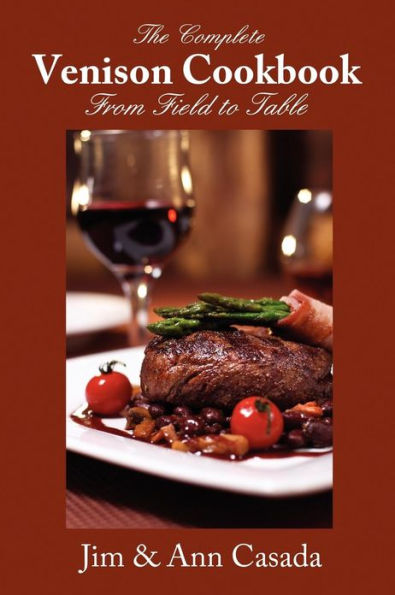
Beyond that, I have a surplus of copies of The Complete Venison Cookbook and need to reduce my stock. With that in mind, I’m offering it for only $13, postpaid. That’s a savings of $8 over the normal price (shipping included) of $21.
RECIPES
I grew up in an area where corn was and long had been the most common aspect of daily diet for humans and critters alike. It figured in the diet of the former on almost a daily basis and in many cases in more than one meal a day and/or in multiple forms. Corn could be prepared fresh from the field in a wide variety of ways, provided food for livestock, and furnished grain for grinding in tiny tub mills or larger operations where the miller took a “toll” as his pay. That meal in turn would become bread in various forms. Corn kept well after being allowed to dry on stalks in the field, could be grown pretty much anywhere a small patch of ground could be cleared, and when properly prepared was delicious in any form. Although I won’t get deep into the weeds on the matter here, corn could also be converted to liquid form that went by a wonderful array of names including squeezin’s, peartin’ juice, white lightning, tanglefoot, golden moonbeam, mountain dew, and many others.
I don’t think there’s any foodstuff featuring corn I don’t enjoy, and the offerings below are but a small sample of the possibilities this remarkably versatile grain offers. Maybe there’ll be something here in the way of a slightly different method of preparation or a new dish that tickles your fancy. If not, I’m sure the recipes will evoke memories or tickle taste buds. For my part, to borrow from a grand old man of country comedy, Jerry Clower, I think that in writing this material I’ve “done flung a craving” on myself. It’s time to set a pone of cornbread to baking in the oven and then turn it into the wonderful dish, perfect for this time of year, known as cornbread salad (see below).
TRADITIONAL MOUNTAIN CORNBREAD
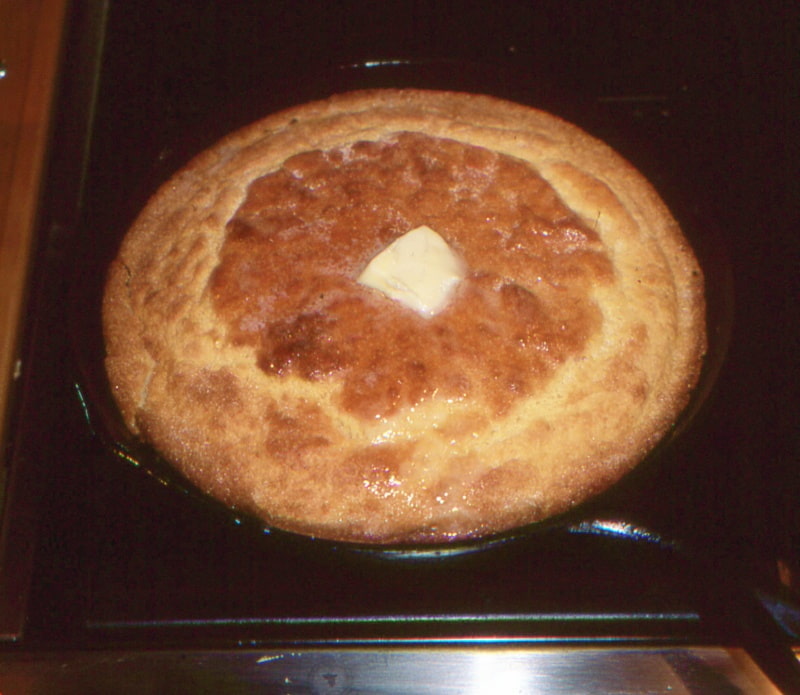
The keys to making really good cornbread are: (1) Cook it in a well-seasoned cast iron skillet, (2) Grease the skillet with streaked meat or bacon, (3) Use stone-ground cornmeal, and (4) Include the right ingredients. Most store-bought cornmeal has been ground at too high a temperature and this does something to the flavor. Often it also contains additives, such as salt or preservatives, which mitigate against a true traditional pone. Also, stone-ground cornmeal, even if it is sifted, has more body or “crunch” to it than other grocery shelf offerings. Buttermilk, eggs, and lard are essential if you want really moist cornbread. This simple recipe has served my family well for as far back as my memory stretches, and I know Grandma Minnie was preparing it this way, though she never measured anything, before the turn of the twentieth century.
2 cups slow-ground cornmeal (white or yellow corn, although I think the best meal comes from a white field corn such as Hickory King, and there’s an old saying “white is for folks; yellow is for critters).
1 cup buttermilk
½ teaspoon baking soda
1 skimpy teaspoon salt
1 beaten egg
3 tablespoons grease from streaked meat or bacon (if you want really moist cornbread, add a fourth tablespoon or a heaping one of mayonnaise)
Prepare skillet in advance (using saved grease from any bacon or streaked meat you cook). Mix the buttermilk, salt, baking soda, and egg with cornmeal and stir thoroughly. Pour grease into the batter and stir in well. Pour batter into pre-heated skillet and bake at 425 degrees for a half hour or until the top crust is golden brown. The bottom crust should be dark brown and the whole pone perfect for slicing, crumbling pieces in a bowl of pot likker, doing the same in a glass of sweet milk or buttermilk, or for making cornbread salad (see next recipe). You can also sop vegetables such as greens or soup beans with cornbread if you wish, but for the ideal marriage of pot likker and corn pone, a big soup bowl with the two mixed in it is the way to go.
CORNBREAD SALAD
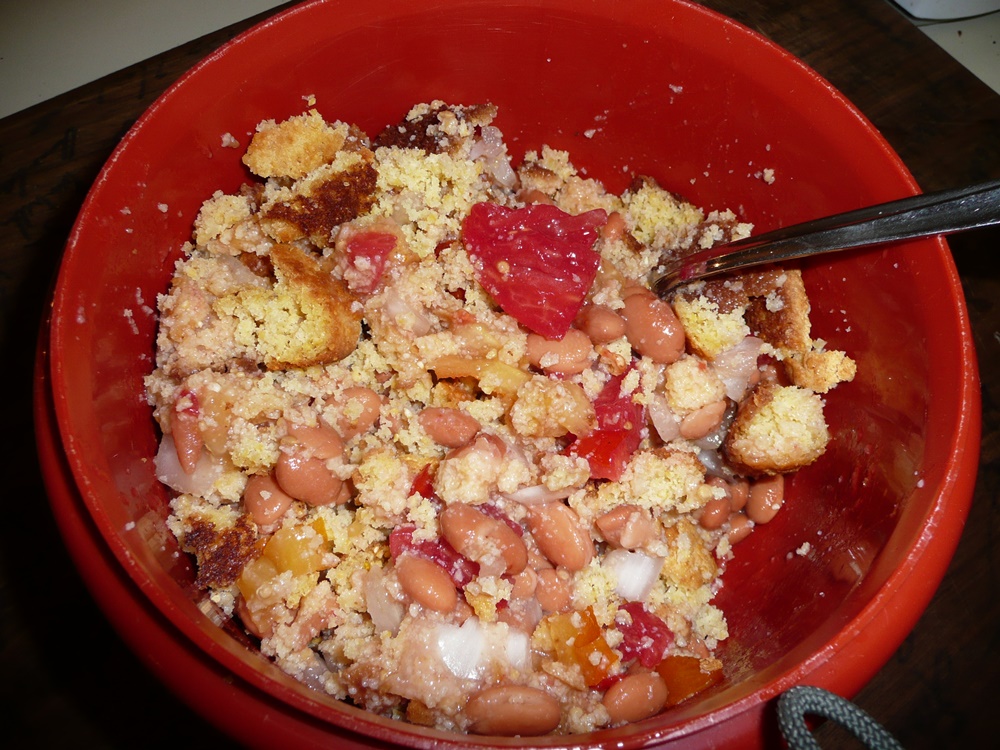
I have to give a tip of the hat to my staunch friend and webmaster, Tipper Pressley, for this simple and scrumptious idea. When she first mentioned cornbread salad to me perhaps the better part of two decades ago, it was one of those “How in the world have I managed to miss that all these years?” moments. Grandpa regularly would crumble cornbread in field peas, creamed corn, or pot liquor of several kinds (he was especially partial to that from turnip greens and cabbage), not to mention in a glass of milk, and in a sense cornbread salad is just another way of using leftover cornbread in a fashion somewhat similar to what he was doing.
To prepare cornbread salad, take leftover cornbread or a freshly bake pone, crumble it up, and mix with whatever fresh vegetables you happen to have available or particularly enjoy. My personal top choices include tomatoes chopped up fine, onions prepared the same way, diced cucumbers, cooked crowder peas or pinto beans (drain them) and raw corn cut straight from the cob. Bell pepper is another possibility, although my stomach unfortunately allows me to “enjoy” bell pepper more than once anytime I consume it. If you want a bit of “heat” crumble in a few flakes of dried hot pepper or chop one or two fresh ones and add to the mix. Stir and top with ranch dressing, buttermilk, or oil and vinegar. Alternatively, mix in some sour cream. Once gently stirred, I find it best to let the bowl sit in the refrigerator for a few hours so the ingredients can mix, mingle, and marry. Mind you, I have a hard time waiting, so enjoying it after a time in the fridge means I’m eating leftover cornbread salad more often than not.
CORNBREAD DRESSING
Make traditional cornbread using the recipe above. Save broth from a baked turkey or chicken (or use purchased broth) and to it added finely chopped celery and onions, chopped pecans or chopped, boiled chestnuts (the latter have long been traditional in my family), and your choice of spices. I like a lot of black pepper and do not use sage, but many folks like the special taste sage imparts. Use a blender to turn your cornbread into crumbs. Add enough broth, with the other ingredients mixed in, to make a batter of about the same consistency as cornmeal batter. As a friend of mine and reader of this newsletter, Craig Stripling, aptly puts it, your mixture needs to be “sloppy” when it goes in the oven. Pour batter into a baking pan or dish and bake at 350 degrees until the top browns and a toothpick inserted in the dressing comes away clean. The dressing should still be moist, although if it gets a bit dry you can always adorn it with gravy.
CORNBREAD AND MILK
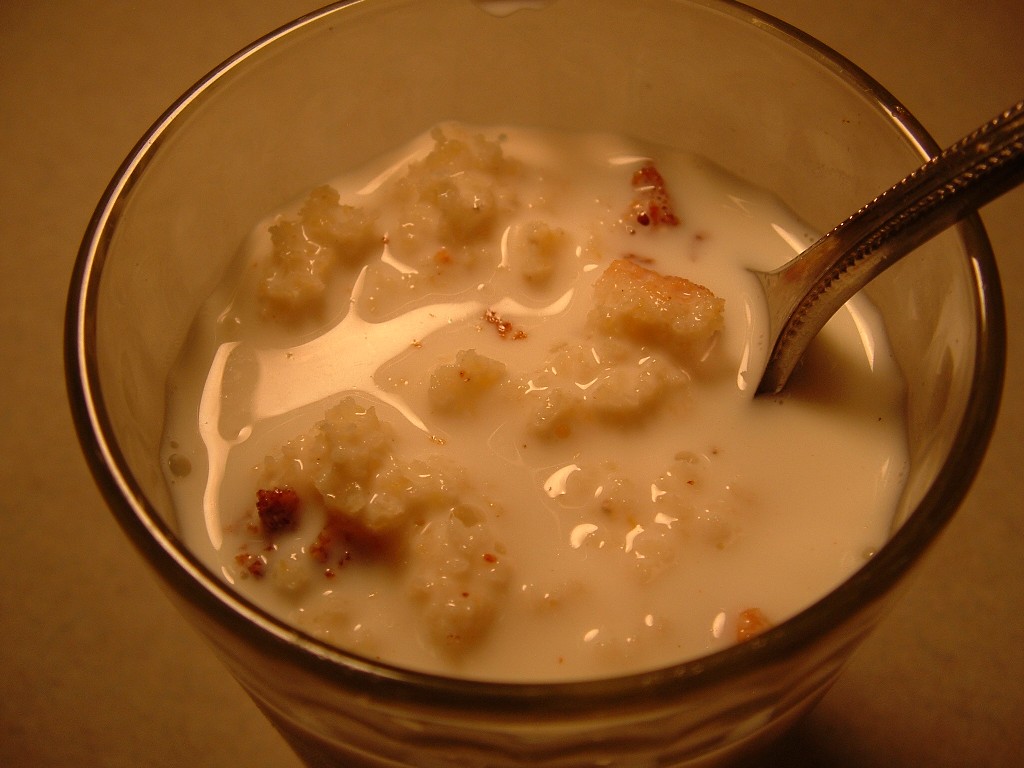
Since cornbread is so common in the mountains of Appalachia a need to use leftover bread often arises. One of the most popular ways to use any remaining cornbread is to mix it with milk. Fill a glass with crumbled cornbread and pour over either sweet milk or buttermilk.
NOTES: (1) Onions, salt, and pepper can be added to the glass for a richer meal. (2) Honey and other sweeteners can be added to make the dish more of a sweet dessert.
TIP: Cornbread and milk makes a great “poor man’s” breakfast just as corn meal gave the filling, tasty quality to sawmill gravy that was a staple of breakfasts in logging camps, Civilian Conservation Corps camps, and the like.
HUSH PUPPIES
Aunt Mag Williams, a wonderful black cook from my youth, always had piping hot hushpuppies (and slaw) to go with fish. I have no idea how she made them, but as is true of this recipe they did have as essential ingredients cornmeal and onion. She also often, though not always, included corn kernels in her batter. This was in the summertime when fresh corn on the cob was readily available.
1½ cups cornmeal
1 cup self-rising flour
½ teaspoon seasoned garlic salt
½ cup chopped onion (or scallions)
1 (8-ounce) can cream-style corn or raw corn cut from the cob
1 egg
1 cup whole milk
Combine the cornmeal mix, flour, and garlic salt in a bowl and mix well. Beat the onion, corn, egg, and milk in a separate bowl and add to the dry ingredients. Place the mixture in the freezer to cool while you heat cooking oil to 375 degrees in a deep fryer. Drop teaspoons of the batter, just a few hush puppies at a time, into the hot oil. Cook until gold brown, turning to cook evenly on all sides. Makes about 30 large hush puppies.
NOTE: Recipe can be doubled (or expanded by other multiples).
FRIED GRITS
When allowed to cool after having been cooked, grits readily congeal. To enjoy fried grits, cook an extra batch when you are having them as a breakfast dish, and place the surplus, while still warm enough to flow, in a baking dish or rectangular cake pan. Keep in refrigerator until ready to use, then cut into serving-size sections. Lightly oil a skillet and fry the grits cakes, turning with care, since the cakes crumble all too readily, once. Easy and scrumptious.
CRACKLIN’ CORNBREAD
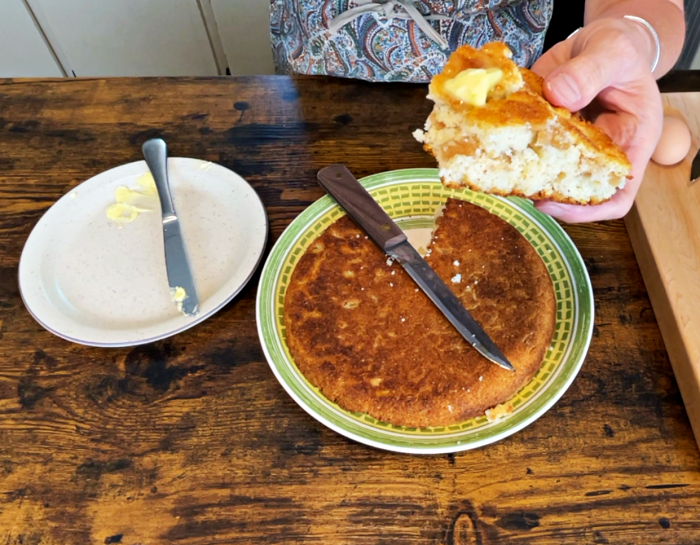
Cracklin’s are the fleshy tidbits that float to the top of the container when lard is being rendered, although doing that these days is a rarity. You can also buy cracklings or fried pork skins can be used as a substitute although, as my Grandpa Joe would have said, “It’s fine but it ain’t quite the same.”
1 pint cracklin’s
1 quart slow-ground cornmeal
1 pint buttermilk
1 teaspoon baking soda
Generous pinch of salt
Use a rolling pin to crush the cracklin’s into small bits. Make batter of cornmeal, buttermilk, baking soda, and salt. Briefly heat the cracklin’s in a frying pan and then stir them into the batter, which should be fairly stiff. Shape into small cakes or bake the entire batch of batter in a well-greased pan. TIP: Heat the cracklin’s in the pan you plan to use to bake the bread. They will ensure it is nicely greased. Cook at 375 degrees until golden brown.